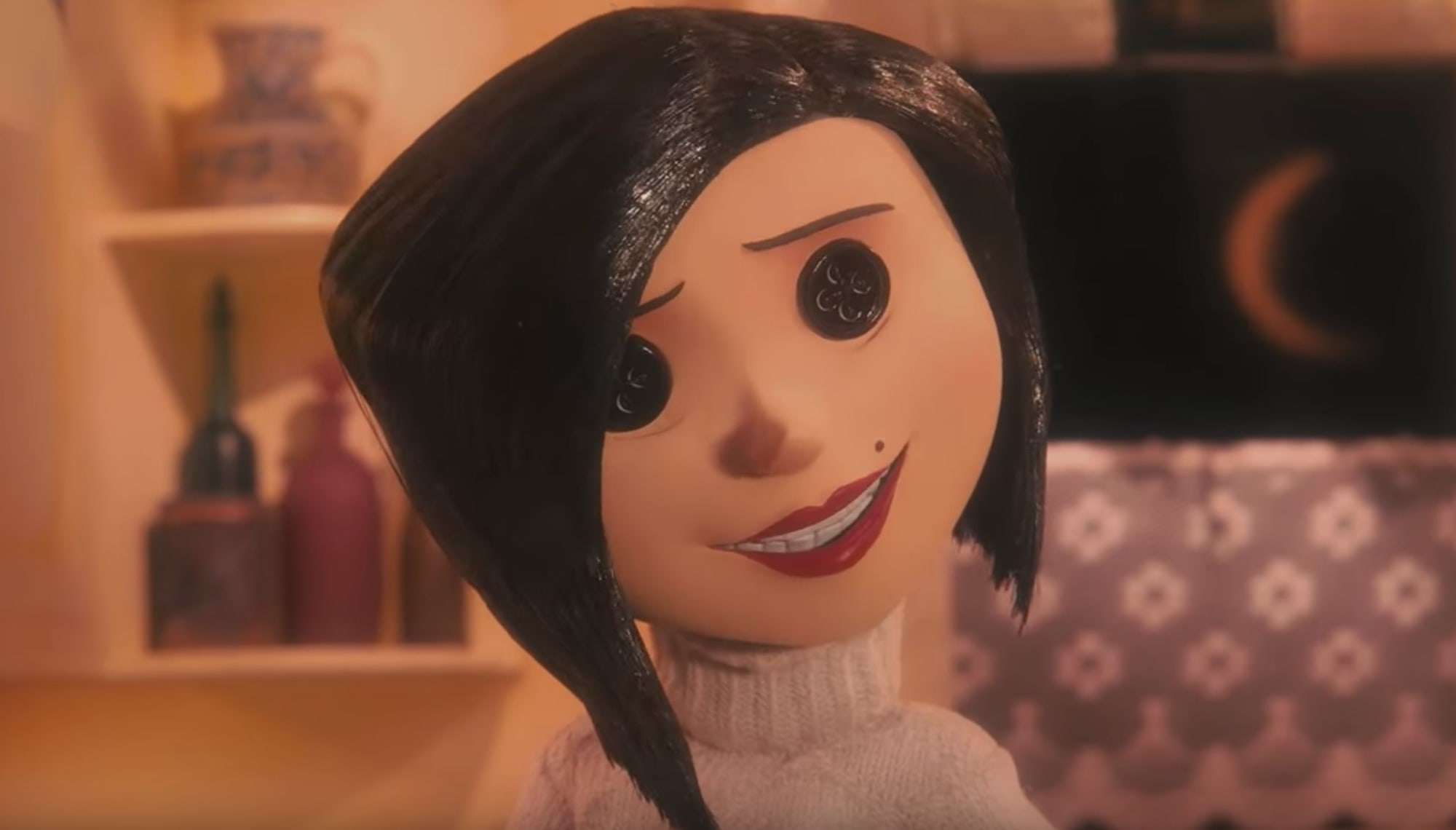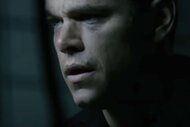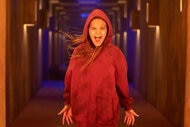Create a free profile to get unlimited access to exclusive videos, sweepstakes, and more!
This Week in Genre History: Coraline ventured into the 'Other World' of animation & reduced creators to tears

Welcome to "This Week in Genre History," where Tim Grierson and Will Leitch, the hosts of the Grierson & Leitch podcast, take turns looking back at the world's greatest, craziest, most infamous genre movies on the week that they were first released.
In the past 25 years, Pixar has dominated the world of animation, making computers the principal tool for the artform. DreamWorks and others have followed in the Disney company's footsteps, creating visual wonders through this incredible technology. But those often indelible films don't represent all that animation can do. Sometimes, the old-fashioned techniques can be just as powerful.
On Feb. 6, 2009, a company called Laika revealed its first full-length stop-motion animated film, a dark children's adventure based on a Neil Gaiman book. Coraline didn't exactly come out of nowhere — in fact, it wasn't even that year's only major stop-motion offering — but it established Laika as a player in the animation world, proving that its filmmakers' lovingly handmade aesthetic could flourish in a world dominated by Woody, Buzz, and Shrek.
Not that it was easy to convince Hollywood at the time that this would work. Never mind the decision to use stop-motion — it was also the fact that Coraline told a scary story about a smart tween named Coraline (voiced by Dakota Fanning) who's unhappy about the new town where she and her parents (Teri Hatcher and John Hodgman) have just moved, discovering a surreal universe through a doorway in the spooky house they now call home. In a 2013 interview, Gaiman recounted the notes they got back from studios about why they wanted no part of Coraline: "It's got a female protagonist, so clearly boys will not go see a movie like this. But it's really scary, so girls are not gonna be into that. And it's in stop-motion — nobody wants to see stop-motion!"
Luckily, Focus Features disagreed, and Coraline rewarded the company's faith by becoming a modest hit and an Oscar nominee. The film didn't change the way Hollywood thought of animation, but it proved once more that stop-motion deserved a place at the animation table. Better yet, the film provided a valuable reminder: So-called kids' movies didn't have to treat their audience like toddlers. Young people like a good scare, too, if it's done well.
Why was it a big deal at the time? Laika was born in the early 21st century when Phil Knight, the mastermind behind Nike, purchased Will Vinton Studios, a struggling stop-motion company that had been pioneers in claymation. (They were responsible for the California Raisins and the Domino's Pizza mascot the Noid.) Renamed Laika, the company was handed over to one of its animators, Knight's son Travis, who had been geeking over stop-motion ever since he was a kid. "I loved the Rankin Bass holiday specials, like Rudolph the Red-Nosed Reindeer," Travis Knight once recalled, "but above all, I loved the Ray Harryhausen creature features. I think the thing that made me a little bit unusual is that I wanted to learn how to do it."
One of the other artists involved early on with Laika was Henry Selick, a filmmaker who'd always championed stop-motion. After all, he was the director of The Nightmare Before Christmas — Tim Burton came up with the story, but it was Selick who brought it to life — and James and the Giant Peach. (He'd also assisted Wes Anderson on 2004's The Life Aquatic with Steve Zissou, handling the animation of that comedy's quirky underwater creatures.) When Selick was going to adapt Gaiman's 2002 novella, he knew what the industry obstacles were going to be — and why that wouldn't stop him.
"[Nightmare and Giant Peach were] the same time that Pixar was coming up," Selick said at the time of Coraline's release. "They were hugely successful. They were great stories, great designs, but clearly, it was like 'CG's the modern way to go.' Stop-motion had a very hard time getting funded for quite a while. But now, after this much time, the CG element is not new anymore. People are interested again in stop-motion. They're less expensive to make. They don't have to make as much money."
There had been stop-motion hits at the time — notably, 2000's Chicken Run from Aardman, the folks behind Wallace and Gromit. But as unique and charming as the look of stop-motion can be, it has one huge disadvantage: It takes forever to animate. For one thing, each puppet in Coraline required multiple iterations to convey the full range of emotions. "On Coraline, she had about 600 mouths, about 300 brows, combine all of those and you had about 200,000 different facial expressions she could make," Knight once said. Plus, because you have to shoot each incremental movement, it's a painstaking process. In fact, Coraline took about 30 months to film. "It kind of hurts my stomach when I think about it but, on a good day, you'll maybe get two or three seconds of finished animation," Selick told the Los Angeles Times. "Every little bit of life that you see on screen is life that's been sucked out of an animator. And you can guarantee that if a shot is really great, if it really sings, that underneath a desk somewhere is an animator huddled in a fetal position, weeping."
Because of that time-intensive process, Laika might have been tempted to temper the more horrifying elements of Gaiman's story. (At first, Coraline thinks this parallel universe she's unearthed, known as the Other World, is wonderful — her parents are a lot cooler in that world, despite having buttons for eyes — but soon, she'll realize it's home to an unsettling secret.) But Selick stuck to his guns, making Coraline sufficiently creepy, complete with ghost children and mirror-image parents who grow increasingly more terrifying. "I say it's for brave children of all ages," Selick said back then, and indeed the movie's macabre tone was markedly different from other animated fare at the multiplex.
But maybe Coraline could find its niche anyway? The previous year had seen four animated movies end up in the Top 10 highest-grossing films of 2008: Wall-E, Kung Fu Panda, Madagascar: Escape 2 Africa, and Horton Hears a Who! Sure, most of those were geared primarily to tots, but that Pixar sci-fi adventure Wall-E had an ambition and seriousness of purpose that challenged its audience. Boosted by strong reviews, which focused on the film's expressive stop-motion and grownup themes, Coraline hoped to be a different kind of animated hit, too.
What was the impact? When Coraline opened in early February 2009, it was bested at the box office by the frothy rom-com He's Just Not That Into You, although it did outperform another kids' film that was also debuting, The Pink Panther 2. It hung in the Top 10 through late March, going on to earn about $75 million domestically and grossing an additional $49 million abroad. The following year, it was nominated for Best Animated Feature — alongside another stop-motion film, Fantastic Mr. Fox (which, by the way, didn't do as well as Coraline, only bringing in about $47 million worldwide) — but eventually lost to Up.
So, Coraline was a success, but not at the level of a Pixar or DreamWorks' offerings. Still, the film helped demonstrate that Laika was a viable animation house. "It was certainly good that the film did as well as it did — it was well-received critically — and that it did as well financially as it did, because that [helped] to announce to the world that Laika is here, that we're around," Knight recalled in 2016. "When we started working in the film business, obviously nobody knew who we were, because we didn't have a track record. So trying to find partners for distribution and everything else was a big challenge."
In the same interview, he reiterated what Gaiman had also mentioned, which is that Coraline had faced resistance because it had a female main character. "The reasons for why people weren't interested [in teaming up with us]... was 'You can't have a female protagonist in an animated film,'" Knight said. "But there's a corollary: 'Unless she's a princess. Maybe a fairy. Otherwise, no.' And so that's the conventional wisdom. These are the rules in the business that we're playing in, and it was shocking to me to hear that feedback."
What's shocking is that this gender imbalance is still pretty rampant in animated movies. Pixar didn't release its first female-driven film until 2012's Brave. When Disney put out Tangled two years earlier, it was only after trying to retool the movie to appeal more to boys. Obviously, 2013's Frozen was a phenomenon, but it, too, was about princesses. That "conventional wisdom" has remained, at least among the big animation houses.
As for Laika, the company has continued to do stop-motion films and continued to make gorgeous, heartfelt stories. ParaNorman, The Boxtrolls, Kubo and the Two Strings, and Missing Link have all been critically acclaimed, but none of them have been able to match Coraline's $125 million worldwide gross. (Missing Link brought in a disastrous $27 million, and that was a film with a voice cast that included Zach Galifianakis, Hugh Jackman, and Zoe Saldana.) It's, frankly, disheartening that Laika still struggles to be heard amid the din of bigger, flashier animated offerings. In a 2019 interview, Laika producer Arianne Sutner put it succinctly: "There are incredible [animation companies] out there, as you know — you're seeing these movies. And they do what they do so well. But I think nobody else is doing exactly what we're doing so well."
Has it held up? Coraline's championing of an intelligent, sensitive young woman remains moving, as is its portrait of adolescent angst — that feeling that you don't quite fit in and haven't yet found your tribe. Watching it at home now, it's impossible to recapture the feeling of seeing the movie in the theater in 3D. (That trend was mostly hype, but the tactile quality of stop-motion made stereoscopic films really pop.) But in terms of making a legitimately creepy — even sinister — family film with a message about appreciating what you have, Coraline remains a standout.
Last week, Laika announced on Twitter that it had put together a whole set of Coraline GIFs, and it was fun to see those carefully crafted images pop back up on the timeline.
Plus, it was just a nice reminder that, although the world of animated movies is vast — including great work being done in Ireland (Wolfwalkers, The Breadwinner), Japan (Studio Ghibli, home of Spirited Away auteur Hayao Miyazaki), and Austin, Texas (Don Hertzfeldt's World of Tomorrow series) — there really isn't anything like a Laika picture. The company has endured some executive shake-ups in the wake of Missing Link's financial failure, and one worries what its future holds. A cinematic landscape without Laika is almost as scary as anything that happens in Coraline.
Tim Grierson is the co-host of The Grierson & Leitch Podcast, where he and Will Leitch review films old and new. Follow them on Twitter or visit their site.


























